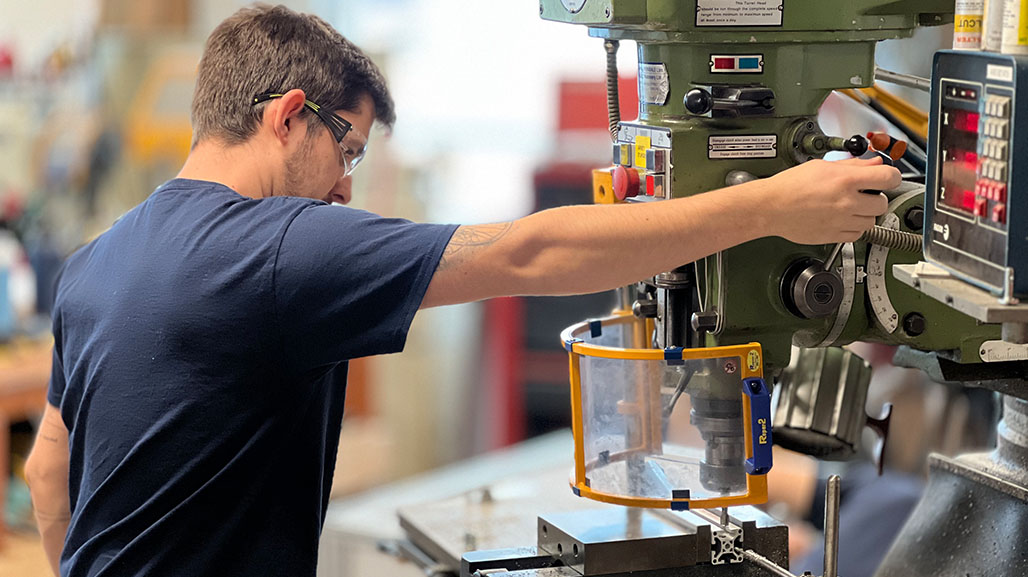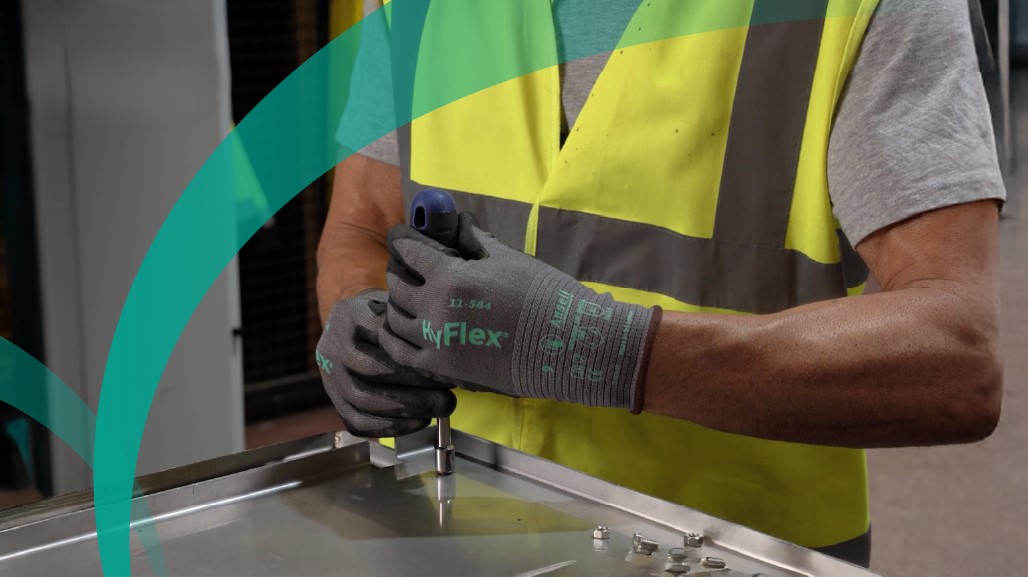Whitepaper: Dehydration and Workplace Injuries
Lack of proper hydration can lead to fatigue, less mental clarity and often can work into heat stress or heat stroke. This article addresses the risk of dehydration in the workplace.
Lack of proper hydration can lead to fatigue, less mental clarity and often can work into heat stress or heat stroke. This article addresses the risk of dehydration in the workplace.
Citation: Darin M. Dillow* (2021) Dehydration and Workplace Injuries. Global Environment, Health and Safety, Vol. 4:3
*Darin Dillow is the CEO of Sword Performance, Inc.
When employers and employees are under pressure to complete needed assignments, some often in hazardous environments, dehydration becomes a significant factor in increasing the potential for workplace injuries. Short staff, complicated assignments, and longer shift work often lead to a limited amount of time to hydrate properly. Lack of proper hydration can lead to fatigue, less mental clarity and often can work into heat stress or heat stroke. This article addresses the risk of dehydration in the workplace, specific examples of cases, and potential steps to implement.
To truly understand if there is a correlation between workplace injuries and dehydration, we must first understand the dire consequences that result from a lack of proper fluid intake. The human anatomy functions via many vital organs, which stabilizes the system to operate normally. However, it is adequate hydration that ensures this functionality remains stable. The human body is comprised of over sixty percent water. However, as we begin to dig deeper, we learn that our most vital organs are more deeply dependent on water, such as the heart and brain, comprised of over seventy-three percent water, according to H.H. Mitchell.3 If we allow the human body to dip below these amounts by not acquiring proper hydration, functionality and everyday tasks begin to slip, and we notice that injuries start to occur. The trend of injuries translates to the workplace as well as workers take fewer breaks and are unable to maintain proper hydration.
As our society continues to move in a fast-paced manner, nutritional marketing tactics are reaching new heights. Over the past few decades, we have heard and seen trends such as extra value, super-size, and fast food. Each of these terms has led to an unhealthier group of people, and most of these individuals are in the workforce. The choices for hydration are something that many people overlook in their individual lives and in the workforce.
Being adequately hydrated has many benefits which can help in our overall health if taken seriously. Our energy levels, mental clarity, and a healthy immune system are just a few benefits that can be accomplished just by merely hydrating our bodies properly. Several studies indicate that proper hydration can lead to better sleep, a clearer mind, and energy levels that are improved compared to that of individuals who are experiencing dehydration symptoms. One such study published by MDPI shows that more significant fatigue and lower vigor were shared with the lack of proper fluids in more extended hour periods. Specifically, "Increasing water intake in low consumers significantly decreased fatigue/inertia, confusion/bewilderment, and thirst scores, with a non-significant decrease in sleepiness.”2 Understanding the importance of hydration in our everyday lives is essential, but even more so when we perform potentially dangerous tasks at the workplace. Every day, workers perform tasks that affect their own lives and the lives of those around them. Steel workers who are exposed to extremely high temperatures, pilots who control tons of flying material and passengers' lives, and nurses and doctors responsible for making life-altering decisions for their patients are examples of the critical tasks done daily throughout the workforce. If any of these workers are dehydrated and their mental clarity is compromised, their lives and those they look after could be fatally affected.
In fourteen years, there were over seven hundred deaths related to heat-related illnesses.1 This does not include hospitalizations or minor cases that went unreported. One case happened as recently as April 2020. A worker who worked for a framing company was performing routine tasks as his company worked to complete a job for a multi-resident housing complex in Oklahoma City. However, upon returning, the worker took a lunch break at a standard time and exhibited signs of heat stress. The worker stated he was dizzy and had a severe headache and tightening in his chest. He then lost consciousness as he succumbed to his injury and passed away mid-afternoon.6 The weather in Oklahoma City on the afternoon of the accident was approximately eighty-five degrees, which is an average temperature for this period.
Dehydration in the workplace can have dire consequences. Workers can present signs of dehydration early in the shift or throughout the duration. Signs and symptoms can include lightheadedness or dizziness, headaches, confusion, or weakness. It is imperative to be able to recognize these signs early to provide corrective measures. Simple methods can make a vast improvement for a worker who becomes dehydrated. However, shifts are growing longer, and workdays are increasing in demand.
Reports show that the average worker is working an average of ten plus hours per shift.4 These shifts can also push into consistent six-to-seven-day work periods, increasing stress levels and leading to increased dehydration.
There are many solutions that employers can implement to help with the issue of dehydration. The first solution is to have a written plan to combat heat stress and dehydration in each workplace environment. Each company should have a written safety plan, but many employers do not specifically address it as it is not a mandated standard in the United States. However, the Occupational Health and Safety Organization General Duty Clause states, "shall furnish to each of his employees' employment and a place of employment which are free from recognized hazards that are causing or are likely to cause death or serious physical harm to his employees." 5 Understand this rule, and if heat stress or dehydration is an issue, it should be addressed with a written directive.
The second item that can be addressed is the way employees can access proper hydration substances. These can be provided by the employer or can be purchased by the employee. Still, there should be some mechanism to ensure that the proper hydration materials are easily accessible on the job. All jobs are different, and this should be tailored to meet the employee and employer's needs. Ensure that the proper breaks are being taken so that the employee can obtain the appropriate hydration. However, there are some positions where this may not be feasible and, in these cases, ample hydration should be allowed within the workspace.
Ultimately, proper hydration starts with each individual. Each person is different in their needs of hydration. The physical make-up of the person, medical conditions, and genetics can all play a role in how much hydration is needed throughout the day. As an employee, it is imperative that you start each shift adequately hydrated. Many times, how we enter the workday is as important as how we leave. If you enter the workday starting dehydrated, it will be hard to catch up.
Always make sure to take the time to listen to your body. If you are thirsty, drink. Drink to thirst is a new term that is becoming popular. This means that you are already showing signs of dehydration once your body is sending signals that you are thirsty. In the past, the common practice was to schedule hydration breaks. This may not be suitable for each individual. Have the proper hydration readily available. Soft drinks, highly caffeinated substances, and energy drinks may all contribute to dehydration and may not help in the long run. Having the proper hydration drinks available is essential. Study to find the right substance to hydrate with ensure that you have it when needed. Dehydration can occur very quickly and is often ignored until it's too late. As an employee, be aware of the dangers of heat stress and dehydration as it can affect not only you but also others who rely on you.
References
Previously Featured on Global, Environment, Health and Safety. Browse MSCDirect.com for a variety of hydration drinks from SWORD to help keep your workers safe.




